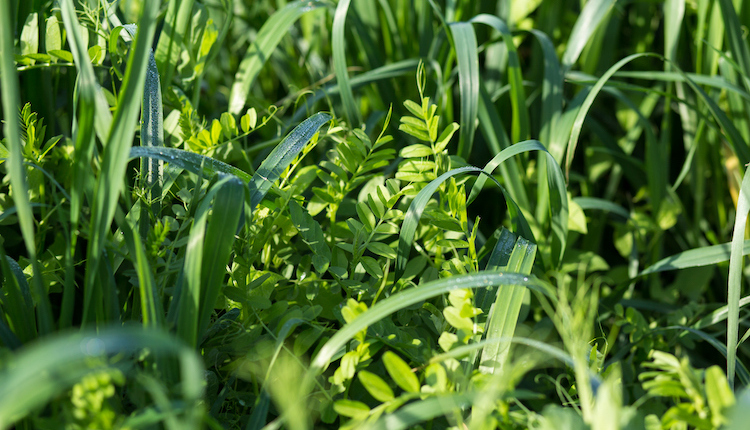
Crude protein makes a great contribution to dairy rations, and it is one of the most important quality metrics in forages. Forage labs calculate this measurement by simply quantifying the nitrogen found in the plant material and then scaling that nitrogen to account for non-nitrogen protein components. This means that crude protein is really all about nitrogen.
In a year with record nitrogen and soybean meal prices, the crude protein you produce on your farm is all the more valuable. That’s why it’s a challenging situation when your forage test comes back a little light on the protein side of things.
Fertilizer cuts come at a cost
For forage grasses, the two major factors that influence crude protein are nitrogen fertilization and stage of maturity at harvest. With fertilizer prices the way they are, perhaps you opted to cut back on spring nitrogen application or even eliminate it completely. If that’s the case, it should come as no surprise to you that your crop’s crude protein is down a few points.
There is a direct relationship between nitrogen application and both the yield and quality of forage grasses. For example, a 50-pound-per-acre reduction in nitrogen would likely result in a yield loss of at least 500 pounds of forage per acre and about a one point reduction in crude protein. There’s nothing wrong with cutting back on nitrogen, but it will have consequences that affect both your crop and your livestock.
If you are facing yield loss due to fertilizer reduction, it may be tempting to delay harvest to add a little extra yield. This is a dangerous move for a forage producer. While you might make up for the yield reduction, you will lose even more crude protein and this loss will impair fiber digestibility. The end result might be a forage that is only fit for heifers or dry cows.
While you may have missed the mark with the first cutting, that doesn’t mean that you can’t grow the crude protein you need this year. One benefit to cutting back on spring nitrogen is that it will favor any nitrogen-fixing legumes present in your grass stands. They should have a strong presence in the aftermath cuts and boost the protein content.
Spreading manure between cuttings to meet the crop’s nitrogen needs is another option. Injecting liquid slurry is the best way to fertilize a crop with manure, but other tricks, like aerating the field ahead of the spreader, can also improve nutrient retention. In addition to nitrogen, manure contains sulfur, which is another nutrient that can limit plant growth and nitrogen utilization if not in adequate supply.
If you need another shot at producing high-protein forage, consider planting an annual legume crop as an emergency crude protein source for your farm. A rapidly establishing species, such as berseem clover, may still be able to produce significant biomass this year. Alternatively, a fall forage crop like triticale and vetch after corn could add a whole extra cutting of quality forage to your season, bringing your crude protein woes to an end.








